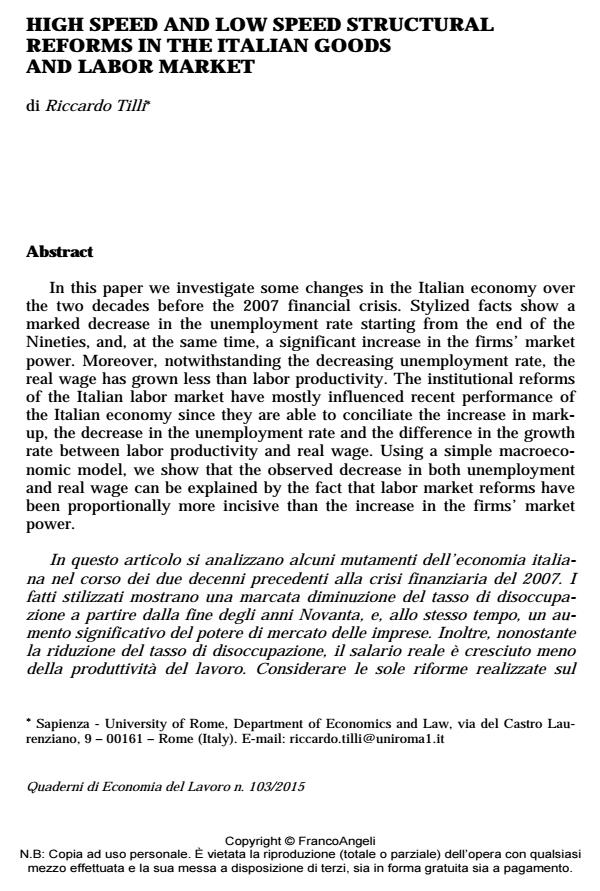High speed and low speed structural reforms in the italian goods and labor market
Titolo Rivista QUADERNI DI ECONOMIA DEL LAVORO
Autori/Curatori Riccardo Tilli
Anno di pubblicazione 2015 Fascicolo 2015/103
Lingua Italiano Numero pagine 16 P. 67-82 Dimensione file 82 KB
DOI 10.3280/QUA2015-103005
Il DOI è il codice a barre della proprietà intellettuale: per saperne di più
clicca qui
Qui sotto puoi vedere in anteprima la prima pagina di questo articolo.
Se questo articolo ti interessa, lo puoi acquistare (e scaricare in formato pdf) seguendo le facili indicazioni per acquistare il download credit. Acquista Download Credits per scaricare questo Articolo in formato PDF

FrancoAngeli è membro della Publishers International Linking Association, Inc (PILA)associazione indipendente e non profit per facilitare (attraverso i servizi tecnologici implementati da CrossRef.org) l’accesso degli studiosi ai contenuti digitali nelle pubblicazioni professionali e scientifiche
In this paper we investigate some changes in the Italian economy over the two decades before the 2007 financial crisis. Stylized facts show a marked decrease in the unemployment rate starting from the end of the Nineties, and, at the same time, a significant increase in the firms’ market power. Moreover, notwithstanding the decreasing unemployment rate, the real wage has grown less than labor productivity. The institutional reforms of the Italian labor market have mostly influenced recent performance of the Italian economy since they are able to conciliate the increase in mark-up, the decrease in the unemployment rate and the difference in the growth rate between labor productivity and real wage. Using a simple macroeconomic model, we show that the observed decrease in both unemployment and real wage can be explained by the fact that labor market reforms have been proportionally more incisive than the increase in the firms’ market power.
Riccardo Tilli, High speed and low speed structural reforms in the italian goods and labor market in "QUADERNI DI ECONOMIA DEL LAVORO" 103/2015, pp 67-82, DOI: 10.3280/QUA2015-103005